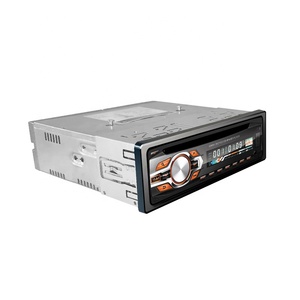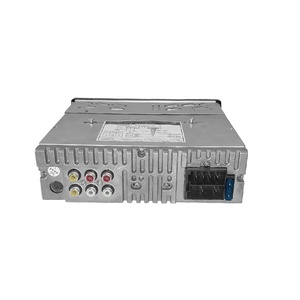(18743 products available)








































![[GIET]External CD DVD Drive, CD Burner USB 3.0 with 4 USB Ports <strong>and</strong> 2 <strong>TF</strong>/SD <strong>Card</strong> <strong>Slots</strong>, Optical <strong>Disk</strong> Drive for Lap](http://s.alicdn.com/@sc04/kf/Hc936a6799a0541a793da9ea2dc80cb11f.png_300x300.jpg)
![[GIET]External CD DVD Drive, CD Burner USB 3.0 with 4 USB Ports <strong>and</strong> 2 <strong>TF</strong>/SD <strong>Card</strong> <strong>Slots</strong>, Optical <strong>Disk</strong> Drive for Lap](http://s.alicdn.com/@sc04/kf/Hb80dceac963f47aba33349bc2cfe6882m.jpg_300x300.jpg)
![[GIET]External CD DVD Drive, CD Burner USB 3.0 with 4 USB Ports <strong>and</strong> 2 <strong>TF</strong>/SD <strong>Card</strong> <strong>Slots</strong>, Optical <strong>Disk</strong> Drive for Lap](http://s.alicdn.com/@sc04/kf/H39508224979b4be1b61efe0adf1b7bd22.png_300x300.jpg)
![[GIET]External CD DVD Drive, CD Burner USB 3.0 with 4 USB Ports <strong>and</strong> 2 <strong>TF</strong>/SD <strong>Card</strong> <strong>Slots</strong>, Optical <strong>Disk</strong> Drive for Lap](http://s.alicdn.com/@sc04/kf/H87cbf6d1ef7c408eacb721d644d2de14z.jpg_300x300.jpg)
![[GIET]External CD DVD Drive, CD Burner USB 3.0 with 4 USB Ports <strong>and</strong> 2 <strong>TF</strong>/SD <strong>Card</strong> <strong>Slots</strong>, Optical <strong>Disk</strong> Drive for Lap](http://s.alicdn.com/@sc04/kf/H7c82a2ac8ae44122a5fbf19bedce5969m.jpg_300x300.jpg)
![[GIET]External CD DVD Drive, CD Burner USB 3.0 with 4 USB Ports <strong>and</strong> 2 <strong>TF</strong>/SD <strong>Card</strong> <strong>Slots</strong>, Optical <strong>Disk</strong> Drive for Lap](http://s.alicdn.com/@sc04/kf/H66b5fcac15ac48aa9062541c012c05cbA.jpg_300x300.jpg)















































































































































































The TF card and U disk slot are mainly of two types, the USB 2.0, which was the first generation of USB, and the USB 3.0, which is a later development of the USB flash drive. It is significantly faster than the USB 2.0 disk.
The TF card slot can either be a spring push type or a slide type. In the spring push type, it is expected that when the TF card is pushed into the slot, the card would spring back, and it would be pulled out to be used. It is, however, important to know that this kind of slot damages easily and can only be used when the card is pushed in. The slide slot type is easier to handle and work on. The card can easily be placed in the slide slot and taken out when it is sloted in the right direction. To slide the card in or out, the slot must be aligned with the card.
The TF card and U Disk slot is a feature commonly found on electronic devices, such as televisions, tablets, and portable media players. This feature typically has two main components: a TF (TransFlash) card slot and a U (USB) disk slot. Both slots allow users to insert a TF memory card or a USB flash drive to expand storage space or access and play media and other digital content stored on the memory card or flash drive.
The functions and features of a device with a TF card and U Disk slot include the following:
Industries and individuals use USB drives and TF cards for many purposes. They provide practical solutions for storing and sharing data. Some common applications include:
Digital Forensics
Digital forensics specialists use TF cards and USB drives to investigate crimes. They use these storage devices to extract and store data from phones, tablets, and other electronic devices. Information from these storage devices can help solve cases. It can give detectives details about messages, pictures, and documents.
Medical Imaging
In the medical field, TF cards and U-disks are useful for archiving. U-disks provide a quick way to transfer reports between doctors' offices. TF cards are best for storing X-rays, MRIs, and ultrasound pictures. Doctors can put all imaging files on the card and hand it to patients. The Card gives doctors all the needed files to make clinical decisions.
Automotive Data Logging
Car makers use TF cards to store data from sensors and dash cameras. The cards collect data on driving patterns and road conditions. This information helps engineers to improve vehicle design. Also, fleet managers can track drivers' performance with this data. Some cars with advanced driver systems use the card to update software as needed.
Gaming and Entertainment
Gamers always need extra storage space for game collections and updates. A fast TF card is a good choice for the Nintendo Switch. It allows users to download more games and add-ons. Also, people can use a card with a USB adapter to play music and movies on devices that don't have built-in storage.
When choosing a TF card and U Disk slot for customers, various factors such as durability, data transfer speed, compatibility, number of slots, and their purpose should be considered.
Q1: What is the difference between a TF card and a USB flash drive?
A1: The primary distinction between a TF card and a flash drive lies in their physical design. A TF card - also referred to as a micro SD card - is compact and designed for insertion into various electronic devices, whereas a USB flash drive features a USB connector that allows it to be plugged directly into computers and other devices for data transfer and storage.
Q2: Do all cars read TF cards?
A2: Typically, most modern vehicles equipped with car stereos or multimedia systems that support digital media formats are likely to accommodate TF cards. However, this may vary based on the model year and equipment level of the particular automobile. It's always best to consult the owner's manual or check the specifications of the car's audio system to determine if it supports a TF card.
Q3: What is the maximum storage for a TF card?
A3: A TF card, also referred to as a micro SD card, can hold as much as 2 terabytes (TB) of data. However, the actual amount of storage that a TF card can have depends on the device it's used with and whether that device is compatible with high-capacity cards.
Q4: What are the advantages of a TF card slot?
A4: Here are some merits of the TF card slot: